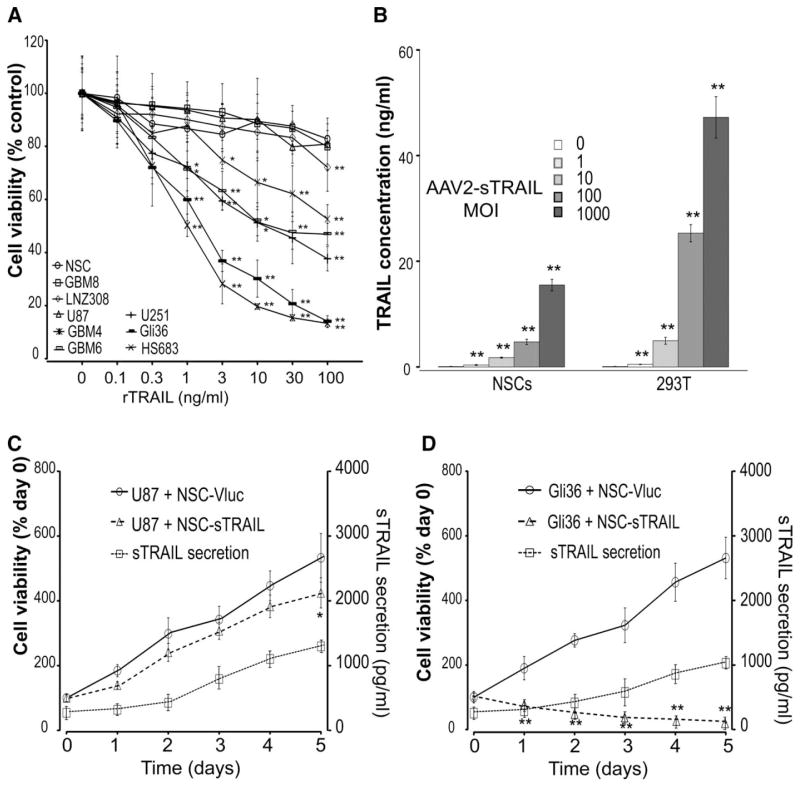Figure 1.
Expression of soluble TRAIL in NSCs and its effect on glioblastoma cells. (A): 3 × 103 U87, U251, LNZ308, HS683, and Gli36 human glioma cell lines, HB1.F3.CD normal NSCs, as well as GBM4, GBM6, and GBM8 primary glioblastoma (GBM) stem-like cells were treated with 0–100 ng/ml of recombinant TRAIL (rTRAIL). Cell viability was monitored after 3 days by assaying Gluc activity in the medium. Data presented as the percentage cell viability ± SD (n = 8; *, p <.05; **, p <.01 vs. no treatment by two-way ANOVA and Tukey’s post hoc test) in which the control DMSO group is set at 100%. (B): NSCs or 293T cells were infected with AAV2-sTRAIL vector at different MOI. Three days later, conditioned medium were assayed for TRAIL secretion using ELISA. Data presented as mean TRAIL concentration (ng/ml) ± SD (n = 4; **, p <.01 vs. cells transfected with Vluc). (C, D): 3 × 103 U87 (C) or Gli36 (D) glioma cells expressing Gluc were seeded in the lower wells of a 96-well 0.4 μm transwell plate. 103 NSC-sTRAIL or NSC-Vluc (control) cells were seeded in the upper wells. Aliquots of conditioned medium were assayed daily for TRAIL secretion using ELISA. GBM cell viability was also monitored by assaying Gluc activity in the conditioned medium over time. Left y-axis: Normalized Gluc RLU as cell viability (day 0 set at 100) ± SD (n = 8; *, p <.05; **, p <.01 cells cocultured with NSC-Vluc vs. cells cocultured with NSC-sTRAIL by two-way ANOVA). Right y-axis: TRAIL concentrations in the medium presented as mean sTRAIL concentration (pg/ml) ± SD. Abbreviations: GBM, glioblastoma; MOI, multiplicity of infection; NSC, neural stem cell; TRAIL, tumor necrosis factor-related apoptosis-inducing ligand.

